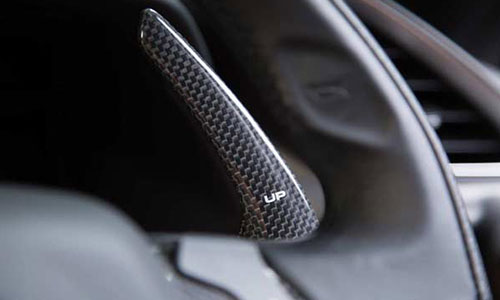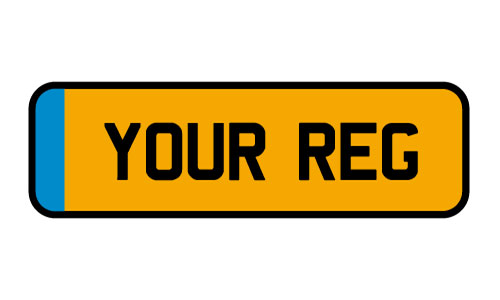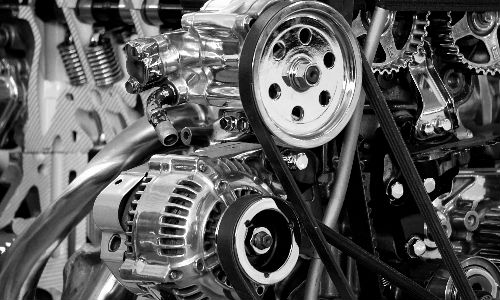Manual vs automatic cars: which is better?
One of the many things you may be considering when buying a car is whether to choose a traditional manual gearbox or an automatic transmission that could make your driving experience easier. Our in-depth guide explains the differences between automatic and manual cars, as well as the pros and cons of each.
30 second car valuation
What’s the difference between a manual and an automatic car?
Basically, a manual car requires the driver to change gears by moving your gear stick and pressing down the clutch pedal at the same time. Manuals are more popular in the UK, whereas in other counties, such as Australia, most of the cars sold have automatic transmissions. On the other hand, an automatic gearbox changes gears for you, depending on your speed and doesn’t have a clutch pedal - instead there is just an accelerator and brake pedal.
Should I buy an automatic car?

An automatic transmission does all the hard work for you, meaning you only have to worry about travelling in the correct direction by selecting D (drive), R (reverse) or P (park). Traditionally, automatic cars used a component called a torque converter to change gear, but many automatics on the road today use automated clutches for improved economical driving.
Advantages of driving an automatic
-
Easier to drive
The primary reason you would drive an automatic car is for practicality. Assuming you are going forwards, all you need to do is put the car into D (drive) and press the accelerator to maneuver, meaning you don’t need to worry about changing the gears until you want to bring the car to a halt or reverse.
-
Smoother ride
You might not even notice the change of gear when driving an automatic car, which means you have a smooth ride with no jittering between gear changes.
-
Economy
New automatic cars are generally more economical than their manual counterparts due to the system being configured to change gear at the optimum time, particularly those with dual-clutch technology. When manually changing gears, you could change up or down at the wrong time, which negatively impacts how economical your drive is. However, if you’re buying an older automatic car, they may be less economical than the manual alternative.
Disadvantages of driving an automatic
-
More expensive
Automatics are often more expensive than buying the same car with a manual transmission. Therefore, if you’re on a budget, you may choose to buy a manual instead.
-
Expensive repairs
Due to the complexity of an automatic gearbox, they can be expensive to repair if something does go wrong.
-
Less engaging
Some drivers find it less fun to drive an automatic car as they feel it gives them less control over the car.
Should I buy a manual car?
Manual cars are more popular in the UK, whereas in other countries such as the USA or Australia you are less likely to find a car with a manual gearbox. But what are the pros and cons?
Advantages of driving a manual
-
Cheaper to buy
A manual car is often cheaper to buy than an automatic, perfect for if you’re on a budget.
-
Easier to maintain
Manual transmissions are less complex than those found in an automatic, therefore there are fewer parts that could cause problems.
Disadvantages of driving a manual
-
Leg strain
You are required to press the clutch to change gears, which could result in strain to your leg muscles, particularly where you are required to frequently change gear.
-
Difficult to drive on hills
For those who regularly drive on steep roads a manual could be difficult to start and stop. However, some modern cars come with hill-start support technology to counteract the difficulty of moving off on hills.
-
More difficult to learn
Some people may find it difficult to coordinate their legs and arms to drive a manual car.
What are semi-automatic cars?

Semi-automatic cars are a combination of both automatic and manual transmissions, giving drivers the best of both worlds. You may also hear people call semi-automatic gearboxes ‘automated manuals’ or ‘clutchless manual transmissions’. When driving a semi-automatic car, the driver has a choice of allowing the car to change gears automatically or changing the gears manually without the use of a clutch.
What driving licence do I need to drive an automatic car?

When you’re learning to drive, you can choose to learn and take your driving test in an automatic car. However, if you choose to take this route, you are only able to drive automatic cars and would need to take your test again in a manual car if you wanted to drive a manual car legally on the roads.
If you learn to drive in a car with a manual transmission, you are legally allowed to drive both manual and automatic cars. Therefore, if you haven’t learnt to drive yet, you may want to carefully consider if you will want to drive a manual car in the future, even if you have no desire to at present.
According to the latest figures from the DVLA, 38.8% of drivers who took a test in an automatic car passed, whereas the figure for those who take a manual test is 46.3%.
So, should I buy an automatic or a manual car?
There is no right or wrong answer, and whether you want to buy an automatic or manual transmission will depend on your requirements. For example, somebody who regularly drives in urban areas may choose to drive an automatic, so that they don’t need to constantly change gears and press the clutch. On the other hand, somebody who prefers a traditional manual car, where they can feel more in control, may want to choose a manual instead.
a
Frequently asked questions
The codes printed on the back of your driving licence tell you what conditions you must meet to drive. As a general rule of thumb, if you have a full driving licence, you can drive any car or small van, with a manual or automatic transmission on the road. If you have an automatic licence, however, you can only drive automatic vehicles and driving a manual car would be an offence.
If your licence permits you to drive automatic cars only, you will need to pass a driving test in a manual car. The good news is that you can start learning to drive a manual car at any time and you don’t need to apply for another provisional licence.
When learning to drive in a manual car as a qualified automatic driver, all the usual rules apply – this includes displaying L plates.
Are you wondering do automatic cars use more fuel? If so, you're not alone. Many people are unsure as to which transmission type uses the most fuel. With advances in technology, it's understandable to be curious about how different transmission types affect fuel consumption and if one is better than the other. Automatic cars are designed to save you money on fuel, and in the long run can be much cheaper than manual vehicles.
You don’t have to take a theory test to upgrade your licence from an automatic to a manual version. Simply book your practical driving test by phone with the Driver and Vehicle Standards Agency (DVSA). Unfortunately, you can’t book it online.
It’ll save time if you have the following on hand when booking:
- a debit or credit card to pay for your test
- your desired test centre location
The driving test follows exactly the same format for both manual and automatic cars. If you fail the test however, you will still be permitted to drive an automatic vehicle.
Related articles
What our customers think





